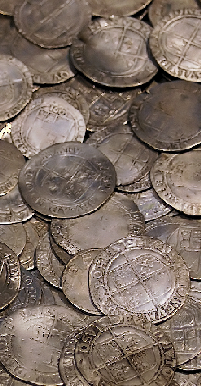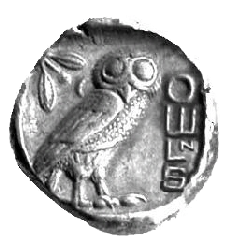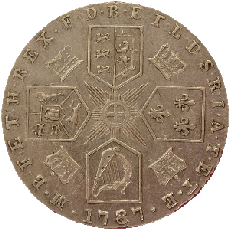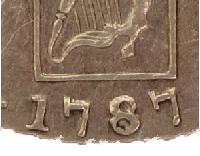
● Next Meeting Status:
Cancelled



● Host Society for the
BANS 2011 Congress
held in Southport


Where to next?

Date Varieties on the 1787 Sixpences
Concurrent But Different Styles Of Date
The silver coinage of 1787 was ordered, not by the Government for general circulation, but by the Bank of England for distribution at Christmas to its favoured customers. As the price of the silver required was consistently above the Mint price of 5/2d an ounce, the coins were struck at a loss, which the Bank accepted. £55,280 worth of silver at the mint price was turned into 746,480 shillings and 712,380 sixpences at a loss of more than £1,100. Each coin was struck carefully to the highest standards achievable with the manually powered presses of the time.

With the coins worth more as bullion than their face value, and an average of only £2,950 worth being issued each year, relatively few of them circulated to any extent, and many of the specimens which we see today are in extremely fine condition. This should have made the study of these coins an easy matter, but perhaps because the coins are common, and the designs have been seen as somewhat pedestrian, they have been rather ignored.
An excellent study of the shillings of this issue by H.E.Manville and P.P.Gaspar
appeared in the British Numismatic Journal, Vol 74, 2004. The sequence of proofs,
the very rare patterns of 1786, the die varieties of 1787, and the extremely well-
Yet even a cursory glance at the catalogues will show that there are no corresponding
die varieties, beyond the ‘no-

Examination of the reverse of the sixpence shows that there are, in fact, two distinct varieties of date. Specifically, the figure ‘7’ appears both with and without a serif. Where the serif is present, it appears on both ‘7s’; where the serif is absent, it is absent from both ‘7s.’ The two styles of figure are easily distinguished, and will be obvious on nearly all of the surviving coins.
The two styles can both be found on coins without the hearts, and with the hearts,
in the Hanoverian arms. This suggests, as the ‘no-

Manville and Gaspar proposed the view that the 1787 coinage was transitional in the sense that, rather than each die being prepared individually from separate punches, a matrix was used which contained much, if not most, of the coin’s design, with only minor elements being added by hand.
An examination of numbers of specimens of the sixpence seems to suggest that the
dates were not included on such a matrix but were added by hand, as the positioning
of the digits is rather variable. The use of two different types of figure ‘7’ is
rather easier to explain if that was the case although, given the care with which
the issues of 1787 were prepared, it is difficult to conceive of a reason why, on
the sixpence alone, the no-

What does all this mean for collectors?
It means twice as many coins to collect! Whereas, formerly, examples of the 'no-
The past few years have seen an enormous growth in interest in the provincial and token coinages of the late 18th century. The regal coins of 1787 are neither as varied, nor as adventurous, as the private tokens, but they do have a story to tell. It would be a shame if they continue to be ignored.
Chris Leather



